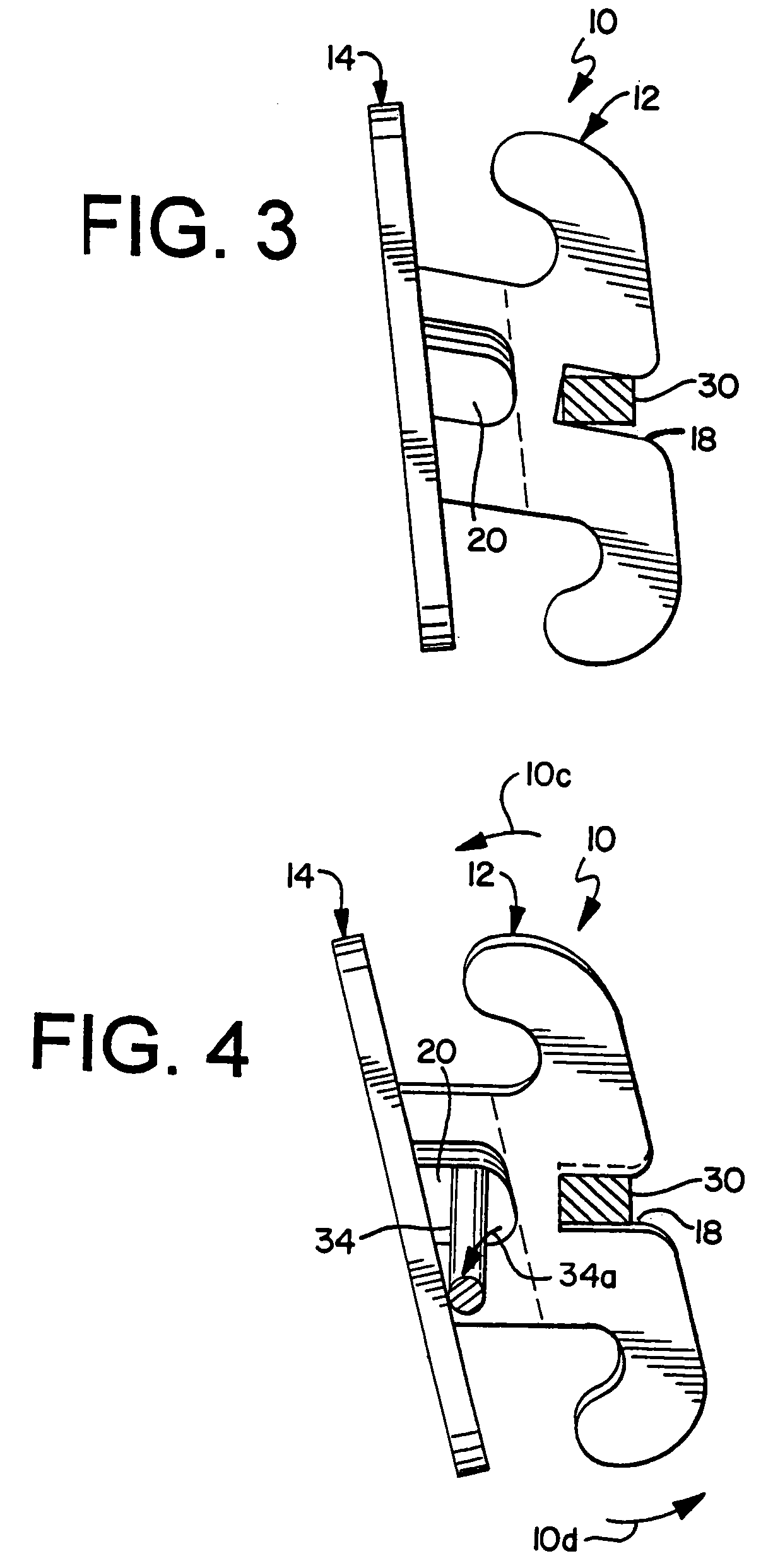Edgewise orthodontic bracket for capturing lost torque
- Summary
- Abstract
- Description
- Claims
- Application Information
AI Technical Summary
Benefits of technology
Problems solved by technology
Method used
Image
Examples
Embodiment Construction
[0064]The improved edgewise bracket of the present invention solves the problem of capturing lost torque created in edgewise brackets during the final stages of orthodontic treatment due to the inevitable vertical tolerances necessary between the archwire slots and archwires themselves necessitated to permit the insertion of the wires. The invention avoids the heretofore often used wire-bending techniques to capture the lost torque by providing tunnels or lumens in the brackets angularly disposed to the archwire slot and which receive a small flexible wire for applying forces to the brackets to cause the diagonally opposed ends of the archwire slots to engage the upper and lower surfaces of a rectangular archwire to attain the predetermined torque value of the bracket.
[0065]The invention includes the use of tunnels or lumens for receiving small flexible wires to be activated while in the presence of the rectangular archwire which is retained in the rectangular archwire slots of the ...
PUM
 Login to View More
Login to View More Abstract
Description
Claims
Application Information
 Login to View More
Login to View More - R&D
- Intellectual Property
- Life Sciences
- Materials
- Tech Scout
- Unparalleled Data Quality
- Higher Quality Content
- 60% Fewer Hallucinations
Browse by: Latest US Patents, China's latest patents, Technical Efficacy Thesaurus, Application Domain, Technology Topic, Popular Technical Reports.
© 2025 PatSnap. All rights reserved.Legal|Privacy policy|Modern Slavery Act Transparency Statement|Sitemap|About US| Contact US: help@patsnap.com



